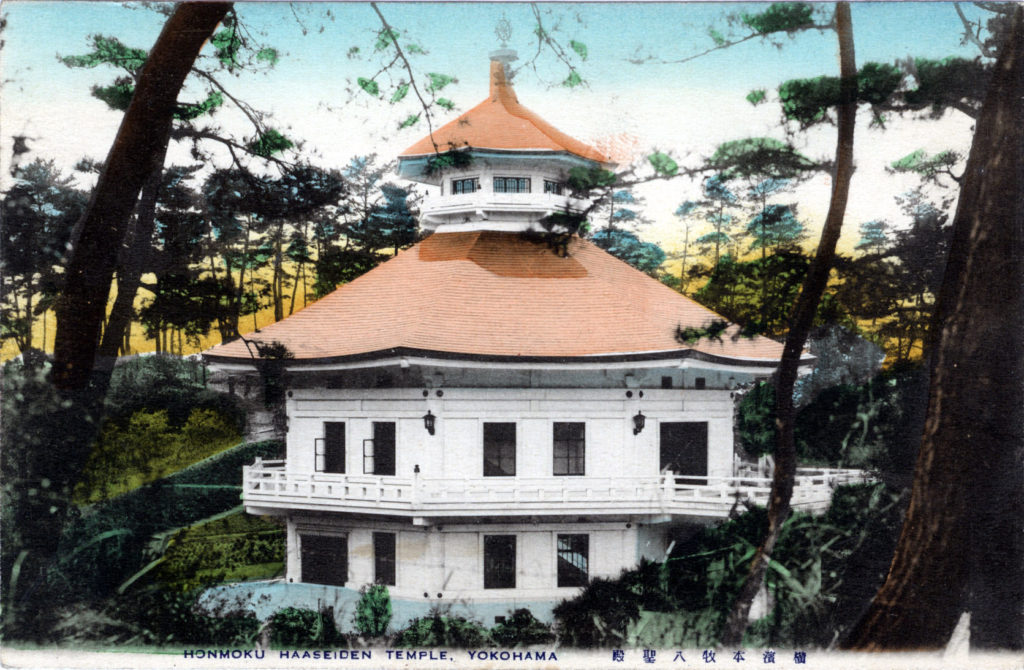“Not far from [Honmoku Shimin] park was a temple-museum named Hasseiden, or Temple of the Eight Gods or Sages. An ethnological museum established in 1933, it was best known for its display of the statues of eight sages: Nichiren, Shinran, Socrates, Christ, Prince Shotoku, Kobo, Confucious, and Shakyamuni. It was housed in a multicolored pagoda-like structure with several triangular, tiled roofs.
“I loved to visit the temple but found it strange that there was no sculpture of Moses. I was also quite confused by the large number of ‘gods’ at a time when I had been indoctrinated at home with the idea that there was only one.”
–Edokko: Growing Up a Foreigner in Wartime Japan, Isaac Shapiro, 2009
See also:
Honmoku, Yokohama, Japan, c. 1910
Sankeiyen, Yokohama, c. 1920.
Nogeyama Park, Yokohama, c. 1935.
“Hasseiden Museum was established by Kenzo Adachi in 1933 to preserve the cultural identity of Yokohama.
“Adachi set up the museum with his own funds; even designing the three-storied octagonal building himself, modeling it on the Yumedono of Horyuji (the ‘Hall of Dreams’ at Nara). In 1937, Adachi donated the museum and the surrounding land (now known as Honmoku Shimin Park) to Yokohama City. Later the same year, the name of the museum was changed by the City to ‘Hasseiden Archives of Local History’.
“The Hasseiden Archives of Local History is best known for its statues that stand in the middle of the building. These statues, which are called the ‘eight world sages’, are those of Shotoku-Taishi, Kobo-Daish, Shinran, Nichiren, Shakya-muni, Confucius, Socrates, and Jesus Christ. These life-size statues were set up by Adachi the same year that he built the museum, after enshrining the spirits of these saints to safeguard the building and museum.
“What makes this unique is that there is a mirror in the platform center with the eight statues encircling it. The mirror symbolizes the universe, thus depicting the reflecting images as being universal.
“The first floor of the building has exhibits relating to fishing, which was once a thriving industry of Yokohama. All aspects of fishery are shown here through various tools, gear, and photographs. The second floor is dedicated to farming. Exhibits include all implements that were used for farming in the area. A special feature here is part of a private house from the Meiji era that has been reassembled, and which also includes a small square dining table and an oblong chest.”
– Wikipedia


